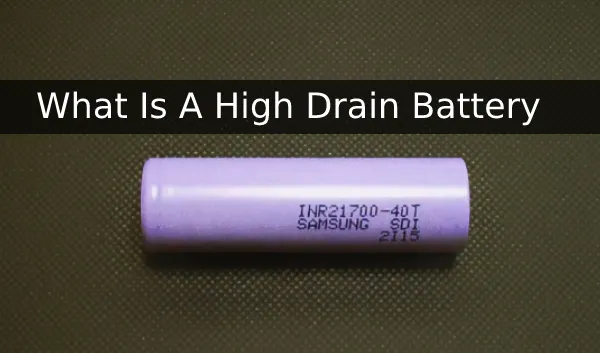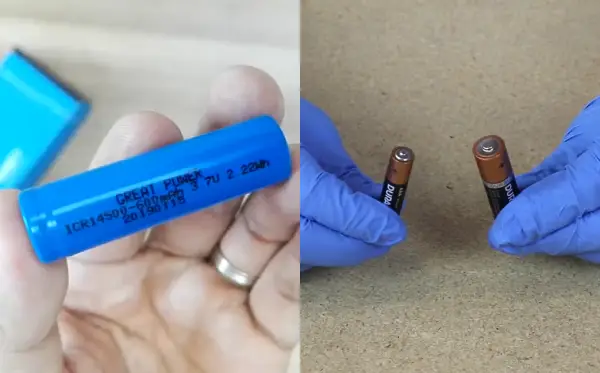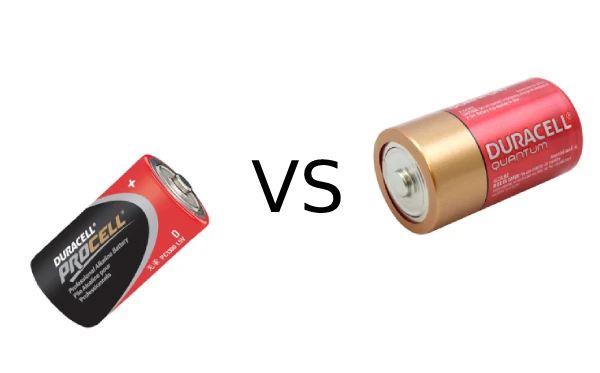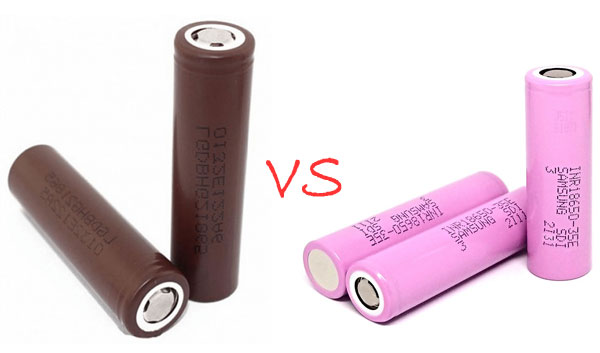A high drain battery is a type of battery that is designed to deliver a high current output over a short period of time, such as in devices that require a lot of power, like digital cameras or power tools. They typically have a lower capacity than types of batteries, but are optimized to deliver more power in a shorter time frame.
Examples:- A high drain batteries include lithium-ion and nickel-metal hydride (NiMH) batteries.
History of a High Drain Battery

The development of high drain batteries can be traced back to the early days of portable electronics, when devices like flashlights and transistor radios were becoming more popular.
The earliest high drain batteries were typically zinc-carbon cells, which were capable of delivering a high current output, but had a relatively short lifespan.
In the 1960s and 70s, the development of alkaline batteries allowed for higher capacity and longer lifespan, while still delivering a high current output. This made them ideal for high-drain devices like portable radios and flashlights.
In the 1990s, the development of nickel-metal hydride (NiMH) and lithium-ion (Li-ion) batteries brought even greater improvements to the performance of high drain batteries.
These batteries offered even higher energy density and longer lifespan, making them ideal for high-drain devices like digital cameras and power tools.
Today, the demand for high drain batteries continues to grow, driven by the increasing use of portable electronics and the need for more powerful and efficient batteries.
Advances in battery technology, such as the development of solid-state batteries and new types of electrode materials, are likely to further improve the performance of high drain batteries in the years to come.
How a High Drain Battery Works
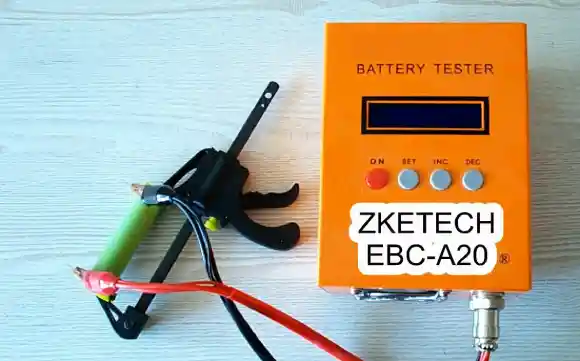
A high drain battery works by converting stored chemical energy into electrical energy, which can then be used to power a device. High drain batteries are designed to deliver a high current output over a short period of time, which requires a different internal structure than low-drain batteries.
In general, a high drain battery will have a larger cathode surface area and thinner electrode separators compared to low-drain batteries. This design allows for faster ion flow and lower internal resistance, which in turn allows the battery to deliver a high current output without overheating or losing too much energy.
When a high drain battery is connected to a device, the chemical reactions inside the battery cause a flow of electrons from the anode to the cathode, creating an electrical current.
As the battery discharges, the chemical composition of the anode and cathode changes, eventually leading to a depletion of the battery’s energy and a decrease in voltage.
To recharge a high drain battery, an external voltage is applied to reverse the chemical reactions and restore the battery’s original composition. This process can be repeated many times, although each cycle of discharge and recharge will gradually reduce the battery’s overall capacity and lifespan.
Average Cost of a High Drain Battery
The cost of a high drain battery can vary widely depending on factors such as the type of battery, the brand, and the capacity. Generally speaking, high drain batteries tend to be more expensive than low-drain batteries due to their higher performance and specialized design.
For example, a single AA-sized alkaline battery, which is a common type of high drain battery, can cost anywhere from a few cents to a few dollars depending on the brand and capacity.
Similarly, a lithium-ion battery for a power tool or digital camera can range from around $20 to $100 or more depending on the brand and capacity.
In general, rechargeable high drain batteries, such as nickel-metal hydride (NiMH) or lithium-ion (Li-ion) batteries, may have a higher upfront cost than disposable batteries, but can provide better value in the long run due to their ability to be recharged and reused many times.
Ultimately, the cost of a high drain battery will depend on the specific needs of the device and the preferences of the user.
Different Types & Uses of High Drain Batteries

There are several types of high drain batteries, each with its own unique characteristics and uses. Here are some examples:
1. Alkaline Batteries
Alkaline batteries are a common type of high drain battery that are widely used in devices like flashlights, radios, and portable electronics. They have a high capacity and are relatively inexpensive.
2. Lithium-ion batteries
Lithium-ion batteries are a rechargeable type of high drain battery that are commonly used in devices like digital cameras, power tools, and smartphones. They have a high energy density and can deliver a high current output.
3. Nickel-Metal Hydride Batteries
Nickel-metal hydride batteries are another rechargeable type of high drain battery that are commonly used in devices like cordless phones, portable audio players, and remote control toys. They have a high capacity and are more environmentally friendly than some other types of batteries.
4. Zinc-Carbon Batteries
Zinc-carbon batteries are an older type of high drain battery that are still used in some devices like flashlights and portable radios. They have a relatively low capacity but are relatively inexpensive.
5. Nickel-Cadmium Batteries
Nickel-cadmium batteries are a rechargeable type of high drain battery that are commonly used in devices like cordless power tools and medical equipment. They have a high current output and can be recharged many times, but are less environmentally friendly than some other types of batteries.
Overall, high drain batteries are designed for use in devices that require a lot of power, such as digital cameras, power tools, and portable electronics.
They are optimized to deliver a high current output over a short period of time and are available in a variety of sizes and types to meet the needs of different devices.
How to Charge a High Drain Battery
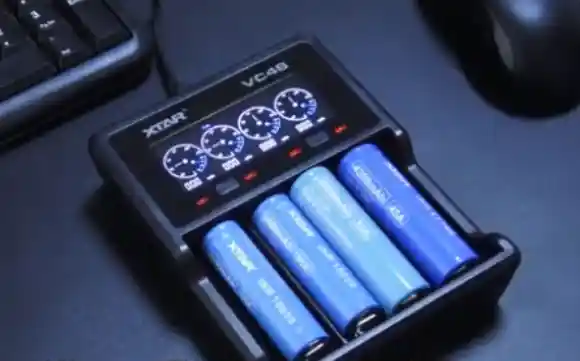
The specific method for charging a high drain battery will depend on the type of battery and the charging equipment being used. However, here are some general steps for charging a typical high drain rechargeable battery, such as a lithium-ion or nickel-metal hydride battery:
1. Choose the Appropriate Charger
Make sure that the charger you are using is compatible with the type of battery you want to charge. Read the instructions carefully to ensure that you understand how to use the charger properly.
2. Prepare the Battery
Make sure the battery is clean and dry before inserting it into the charger. Check the battery for any damage or signs of wear and tear that may affect its performance.
3. Connect the Battery to the Charger
Insert the battery into the charger, making sure that the positive and negative terminals are properly aligned. Some chargers may have additional settings or options that you can adjust based on your needs.
4. Start the Charging Process
Follow the instructions for your specific charger to begin the charging process. Some chargers may indicate the battery’s level of charge, while others may have a light or other indicator to show that the battery is charging.
5. Monitor the Charging Process
Keep an eye on the battery and the charger while it is charging. Avoid leaving the battery unattended or charging it for longer than recommended by the manufacturer.
6. Disconnect the Battery
Once the battery is fully charged, disconnect it from the charger and unplug the charger from the power source. Store the battery in a cool, dry place until you are ready to use it.
Overall, the process for charging a high drain battery is similar to that of charging any other rechargeable battery. However, it is important to follow the manufacturer’s instructions and use the appropriate charging equipment to ensure that the battery is charged safely and effectively.
Average Lifespan of a High Drain Battery

The average lifespan of a high drain battery depends on several factors, including the type of battery, the device it is used in, and the frequency and conditions of use. Here are some general guidelines for the lifespan of common types of high drain batteries:
1. Alkaline Batteries
Alkaline batteries are not rechargeable and have a typical lifespan of 2-7 years depending on the brand and usage.
2. Lithium-ion Batteries
Lithium-ion batteries are rechargeable and have a typical lifespan of 2-3 years, with a capacity loss of around 20% over that time period.
3. Nickel-Metal Hydride Batteries
Nickel-metal hydride batteries are also rechargeable and have a typical lifespan of 2-3 years, with a capacity loss of around 10-20% over that time period.
4. Zinc-Carbon Batteries
Zinc-carbon batteries are not rechargeable and have a typical lifespan of 2-5 years depending on the brand and usage.
It’s important to note that these are just general guidelines, and the lifespan of a high drain battery can vary widely depending on several factors. Proper storage and usage can also affect the lifespan of a battery.
To get the most out of your high drain battery, it’s important to follow the manufacturer’s guidelines for use and storage, and to replace the battery when it no longer performs effectively.
How Long Does It Take to Charge a High Drain Battery?
The amount of time it takes to charge a high drain battery will depend on the type of battery, the charger being used, and the battery’s capacity. Here are some general guidelines for how long it takes to charge common types of high drain batteries:
1. Alkaline Batteries
Alkaline batteries are not rechargeable and cannot be charged.
2. Lithium-Ion Batteries
Lithium-ion batteries are rechargeable and can take 1-3 hours to fully charge, depending on their capacity and the charging rate of the charger.
3. Nickel-Metal Hydride Batteries
Nickel-metal hydride batteries are also rechargeable and can take 1-4 hours to fully charge, depending on their capacity and the charging rate of the charger.
4. Zinc-Carbon Batteries
Zinc-carbon batteries are not rechargeable and cannot be charged.
It’s important to note that these are just general guidelines, and the actual charging time can vary depending on several factors such as the battery’s current state of charge, the charging rate, and the temperature.
It’s also important to follow the manufacturer’s instructions for charging the battery, as some batteries may have specific charging requirements or limitations to prevent damage.
High Drain Battery Storage Best Practices

Proper storage of high drain batteries is important to ensure their longevity and safety. Here are some best practices for storing high drain batteries:
1. Store in a Cool, Dry Place
High temperatures can shorten the lifespan of batteries, so it’s best to store them in a cool, dry place. Avoid storing batteries in direct sunlight or in areas that can get hot, such as near heaters or stoves.
2. Keep Batteries in Their Original Packaging
If possible, store batteries in their original packaging or a storage case designed for batteries. This can help protect the battery from moisture and dust, as well as prevent accidental short circuits if the terminals come into contact with metal objects.
3. Store Away From Other Metal Objects
Avoid storing batteries near other metal objects, as this can cause short circuits or other damage. Keep them separate from metal objects such as coins, keys, or other batteries.
4. Avoid Storing Batteries for Long Periods
Rechargeable batteries, in particular, can lose their charge over time, so it’s best to use them or recharge them periodically. If you plan to store batteries for an extended period, recharge them to about 50% of their capacity first, as this can help prolong their lifespan.
5. Follow Manufacturer Instructions
Always follow the manufacturer’s instructions for storing the specific type of battery you have. Different types of batteries may have specific storage requirements, such as specific temperature ranges or charging levels.
By following these best practices, you can help ensure that your high drain batteries are stored safely and effectively, and that they will perform well when you need them.
Merits and Demerits of High Drain Battery

1. High Power Output
High drain batteries are designed to deliver high power output, making them ideal for devices that require a lot of power quickly, such as high-performance flashlights, digital cameras, and other electronics.
2. Rechargeable
Many high drain batteries are rechargeable, which means they can be used and recharged multiple times, making them a more cost-effective option over time compared to disposable batteries.
3. Wide Availability
High drain batteries are widely available and can be found in many different types and brands, making it easy to find the right battery for your device.
4. Long Shelf Life
Many high drain batteries have a long shelf life and can be stored for extended periods without losing their charge or performance.
5. Good Performance in Cold Temperatures
Some high drain batteries perform well in cold temperatures, making them ideal for outdoor activities and other applications where cold temperatures are a concern.
6. Low Self-Discharge
Some high drain batteries have a low self-discharge rate, which means they can be stored for longer periods without losing their charge or performance.
Demerits:
- High drain batteries can be more expensive than other types of batteries, particularly if they are rechargeable.
- Some high drain batteries may not last as long as other types of batteries, particularly if they are used in devices that require high power output.
- The performance of high drain batteries can be affected by factors such as temperature, storage conditions, and usage patterns, which can make them less reliable for some users.
Conclusion
High drain batteries are an excellent choice for devices that require high power output, and they offer several benefits over other types of batteries, including rechargeability, wide availability, and good performance in cold temperatures.
